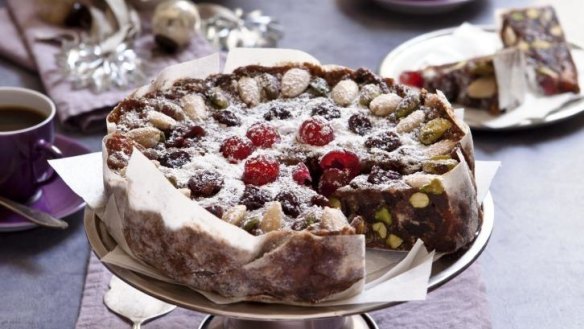Brain food: Can I use real cherries instead of fake glace cherries?

Can I use real cherries instead of fake glace cherries? B. Clendinnen
I think the glace cherry makers of this world would be deeply offended if they heard you referring to their cherries as being fakes. Glace cherries start off being real cherries (see, now you have me doing it as well) – "fresh" cherries, rather – that are blanched and soaked in a sugar syrup. The moisture inside the cherries is drawn out by the sugar solution and in turn the cells of the cherry are filled with the sugar solution. Think of it as embalming for fruit. Glace cherries are so full of sugar almost nothing can live in or on them. So if you're decorating a cake that will be eaten fresh, you can substitute glace for fresh cherries. Do not, however, use fresh cherries in a recipe that calls for glace cherries if the end product will sit around for days or weeks, such as a Christmas cake, as the fresh cherries will go off.
Many of the Asian food items in my fridge, from XO sauce to mayonnaise, contain flavour enhancer 621. Should I be concerned? C. Williams
The number 621 has a vaguely satanic ring. Six Two One? That's "The Neighbour Of The Beast", across the road and a few doors down. Food additives are given a code number. E160d is lycopene, a red food colour extracted from tomatoes. E330 is ascorbic acid, or vitamin C, and is used as an antioxidant. E210 is sodium benzoate, used as a preservative, found in soft drinks and barbecue sauce, can cause asthma and skin rashes and is not recommended for children. E621 is monosodium glutamate or MSG. No research has yet proved a link between MSG and allergic reactions. Glutamate, however, has been recognised as an excitotoxin, a compound that causes neurons in the brain to become overstimulated to the point of damage. Flavour enhancers are like the cover bands of the food world. Just as BABBA sound almost the same as Agnetha, Benny, Bjorn and Anni-Frid, MSG almost makes food yummy – but you know in your heart of hearts that it is not the real thing.
I have a surplus of horseradish. How do I store it? L. Cosman
Many Victorian readers would know chef George Biron and remember wandering around his kitchen garden between courses at his country restaurant Sunnybrae. He freezes his horseradish and uses a microplane to grate off as much frozen horseradish as he needs, then returns it to the freezer. Try finely grated horseradish with butter on roasted whole fish, or with steak. Grate a little with lemon rind into a warm potato salad.
I have a recipe for apricot jam that says to use the apricot kernels. Aren't they poisonous? M. Davids
In the cult '70s BBC comedy The Goodies, in the episode entitled Daylight Robbery on the Orient Express, Graeme Garden, playing detective sniffs a bottle labelled "Arsenic" and says, "Aha! The characteristic smell of bitter almonds!" Bill Oddie asks: "Isn't that cyanide?" to which Graeme responds, "Precisely. This arsenic has been poisoned!" Cue the laugh track. Mix apricot kernels with water or saliva and you get small amounts of hydro-cyanic acid. Eat enough and you can get cyanide poisoning. The precursor compound is volatile, however, and is driven off by cooking.
Send your vexing culinary conundrums to brainfood@richardcornish.com.au or tweet to @Foodcornish
The best recipes from Australia's leading chefs straight to your inbox.
Sign up